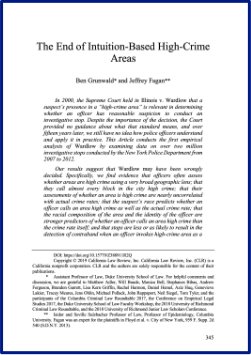By Juliana Gómez-Quintero, Shane D. Johnson, Hervé Borrion, and Samantha Lundrigan
The metaverse is an emerging convergence of technologies (e.g., virtual reality and blockchains) that enables users to experience mixed/extended realities for various legitimate purposes (e.g., gaming, tourism, manufacturing and education). Unfortunately, the crime and security implications of emerging technologies are often overlooked. To anticipate crimes that the metaverse might facilitate, we report the findings of a nominal group technique (NGT) study, which involved a state-of-the-art scoping review of the existing literature and elicitation exercises with two groups of experts (one a diverse group from the UK and Europe, the other representing international law enforcement) with a wide range of expertise. A total of 30 crime threats were identified in the literature or by participants. The elicitation exercises also explored how harmful, frequent, achievable and defeatable participants anticipated that the crimes identified would be. Ratings for these aspects were largely consistent across the two samples, with crimes of a sexual nature (e.g., child sexual abuse material), and crimes against the person (e.g., hate crime) being rated as presenting the highest future risks (i.e. being high harm and high frequency) and being the most difficult to address. The findings illuminate understanding of the most (and least) harmful and likely crime threats the metaverse could facilitate and consequently help stakeholders to prioritise which offences to focus on. In discussing how the crime threats might be addressed, we consider roles and responsibilities and how theory about the management of physical places might inform crime prevention in the metaverse(s).
Futures, Volume 157, March 2024, 103338













